Grapes are small, round fruits that grow in clusters on vines. They come in various colors such as green, red, and purple.
Grapes have a sweet or sometimes tart flavor and are often enjoyed fresh as a snack. They are also used to make a variety of products including wine, juice, jelly, and raisins.
Grapes are known for their high antioxidant content and are a good source of vitamins and minerals.
These little globes of deliciousness pack a powerful nutritional punch, providing a wide range of health benefits. [1]
In this article, we’ll explore some of the many ways that grapes can improve your overall health.
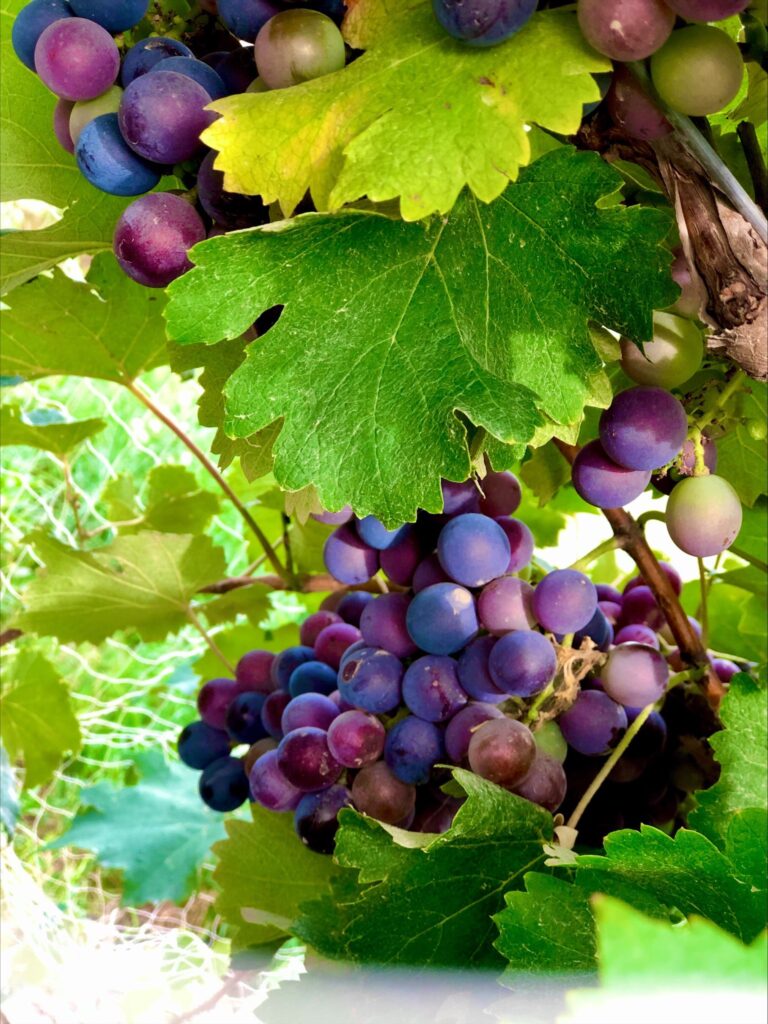
Contents
- 1 Scientific Classification of Grapes
- 2 Origin of Grapes
- 3 Farming and Cultivation of Grapes
- 4 Grapes Nutrition
- 5 Culinary uses of grapes
- 6 Types of Grapes
- 6.1 1: Table Grapes
- 6.2 2: Wine Grapes
- 6.3 3: Juice Grapes
- 6.4 4: Autumn Royal Grapes
- 6.5 5: Pinot Noir grapes
- 6.6 6: Moon Drops Grapes
- 6.7 7: Sultana grapes
- 6.8 8: Canadice Grapes
- 6.9 9: Muscat Grapes
- 6.10 10: Concord Grapes
- 6.11 11: Cotton Candy Grapes
- 6.12 12: Candy Snaps Grapes
- 6.13 13: Candy Hearts Grapes
- 6.14 14: Carnival Grapes
- 6.15 15: Crimson Grapes
- 7 Health Benefits of grapes
- 7.1 1: Improve Heart Health
- 7.2 2: Boost Testosterone Levels
- 7.3 3: Enhance Brain Function
- 7.4 4: Improve Digestive Health
- 7.5 5: Prevent Prostate Cancer
- 7.6 6: Boost Immunity
- 7.7 7: Reduces high cholesterol
- 7.8 8: Improve Sexual Function
- 7.9 9: Anti-Inflammatory Effects of Grapes
- 7.10 10: Grapes for Healthy Skin
- 7.11 11: Grapes for Improved Eye Health
- 7.12 12: Benefits for Respiratory Health
- 7.13 13: Anti-Aging Effects of Grapes
- 7.14 14: Weight Management
- 7.15 15: Bone Health
- 7.16 16: Sleep Quality
- 7.17 17: Benefits for Pregnancy and Fertility
- 7.18 18: Lowers blood pressure
- 7.19 19: May protect against bacteria and fungi
- 7.20 20: Protects against diabetes
- 7.21 21: May improve memory, attention, and mood
- 7.22 22: Keeps You Hydrated
- 8 Easy Grapes Recipes
- 9 FAQs
- 9.1 What are grapes?
- 9.2 What are the health benefits of grapes?
- 9.3 How should I store grapes?
- 9.4 How do I choose ripe grapes?
- 9.5 What are some ways to use grapes in cooking?
- 9.6 Can grapes be harmful to dogs or other pets?
- 9.7 How are grapes used to make wine?
- 9.8 Are grapes grown all over the world?
- 9.9 What are some creative ways to use grapes in recipes?
- 9.10 Are grapes safe for dogs to eat?
Scientific Classification of Grapes
Grapes are classified taxonomically as follows: [2]
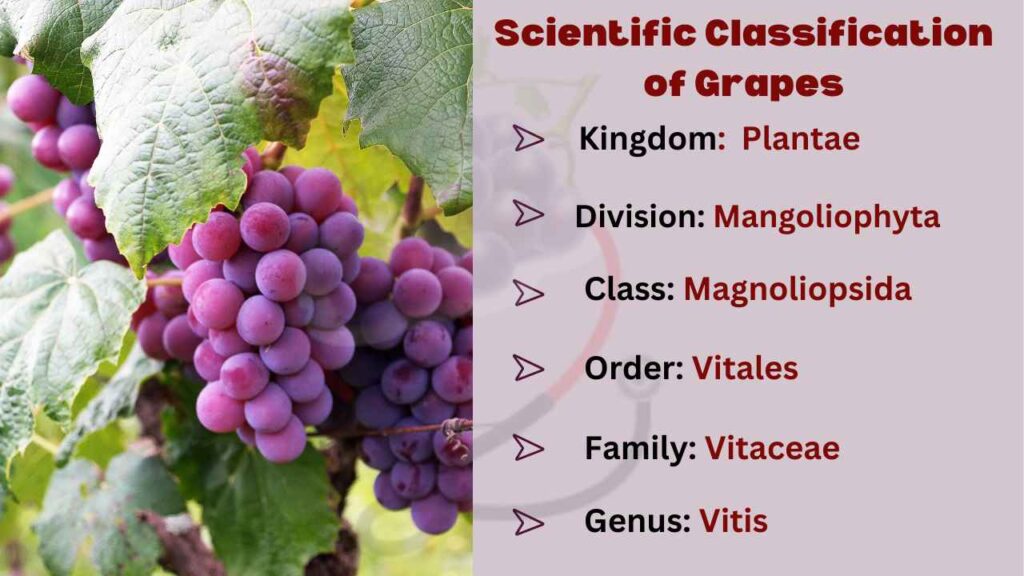
- Kingdom: Plantae (Plants)
- Division: Magnoliophyta (Flowering plants)
- Class: Magnoliopsida (Dicotyledons)
- Order: Vitales
- Family: Vitaceae (Grape family)
- Genus: Vitis
Origin of Grapes
Grapes have been cultivated and consumed by humans for thousands of years. Grape cultivation dates back to 6500 B.C. in Asia Minor and the Near East. Greeks and Romans spread it throughout Europe, while the Spaniards introduced it to North America. Grapes are now grown worldwide for consumption and winemaking, and remain an important crop with a rich history. [3]
Grapes have been used for more than just wine throughout history. They have also been used in traditional medicine to treat a variety of ailments, including constipation, skin and eye problems, and respiratory issues. In addition, grapes have been an important food source, providing nutrients and hydration to people throughout history.
Farming and Cultivation of Grapes
Grapes are a popular fruit worldwide, with over 10,000 varieties cultivated for their flavor and resistance to pests and disease. Grapes are a popular crop grown globally for their vitamin and mineral content. They’re used raw or processed into various products, with China being the largest producer.

Grapes have health benefits and are cultivated for making wine, raisins, and as a fresh fruit. In India, grapes are mainly grown for table use, with approximately 40,000 hectares dedicated to cultivation in Maharashtra, Karnataka, Andhra Pradesh, and Tamil Nadu.
Grapes Nutrition
Grapes are a great source of vitamins, minerals, and antioxidants. A single serving of grapes, which is about one cup, contains the following: [4]

- Calories: 104
- Carbs: 27 grams
- Protein: 1 gram
- Fat: 0.2 grams
- Fiber: 1.4 grams
- Copper: 21% of the daily value (DV)
- Vitamin K: 18% of the DV
- Thiamine (vitamin B1): 9% of the DV
- Riboflavin (vitamin B2): 8% of the DV
- Vitamin B6: 8% of the DV
- Potassium: 6% of the DV
- Vitamin C: 5% of the DV
- Manganese: 5% of the DV
- Vitamin E: 2% of the DV
Culinary uses of grapes
Grapes are a versatile fruit that can be used in a variety of culinary applications. [5] They can be eaten fresh or used in cooking, baking, and even in drinks. Here are some culinary uses for grapes:
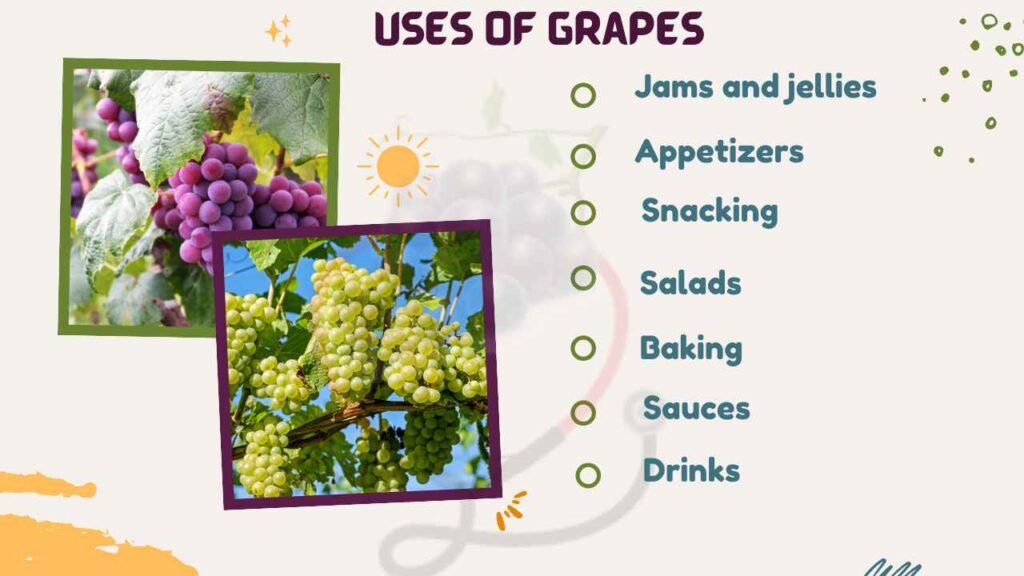
1: Snacking
Grapes are a great snack on their own. They can be eaten fresh or frozen for a refreshing treat.
2: Salads
Grapes can add a sweet and juicy element to salads. They pair well with leafy greens, nuts, and cheese.
3: Appetizers
Grapes can be used in appetizers such as cheese boards, charcuterie boards, and bruschetta. They add a sweet and tart flavor that pairs well with savory ingredients.
4: Baking
Grapes can be used in baking, such as in pies, tarts, and cakes. They add a sweet and fruity flavor that pairs well with other fruits and spices.
5: Sauces
Grapes can be used to make sauces for meat dishes. For example, they can be cooked down with red wine and herbs to make a sauce for steak.
6: Jams and jellies
Grapes can be used to make jams and jellies. They are high in pectin, which makes them a great fruit for thickening jams and jellies.
7: Drinks
Grapes can be used to make juices, smoothies, and even wine. They add a sweet and refreshing flavor that pairs well with other fruits and flavors.
Types of Grapes
Grapes are one of the most popular fruits in the world. They are sweet, juicy, and packed with antioxidants, making them a great snack or ingredient in many dishes. [6]
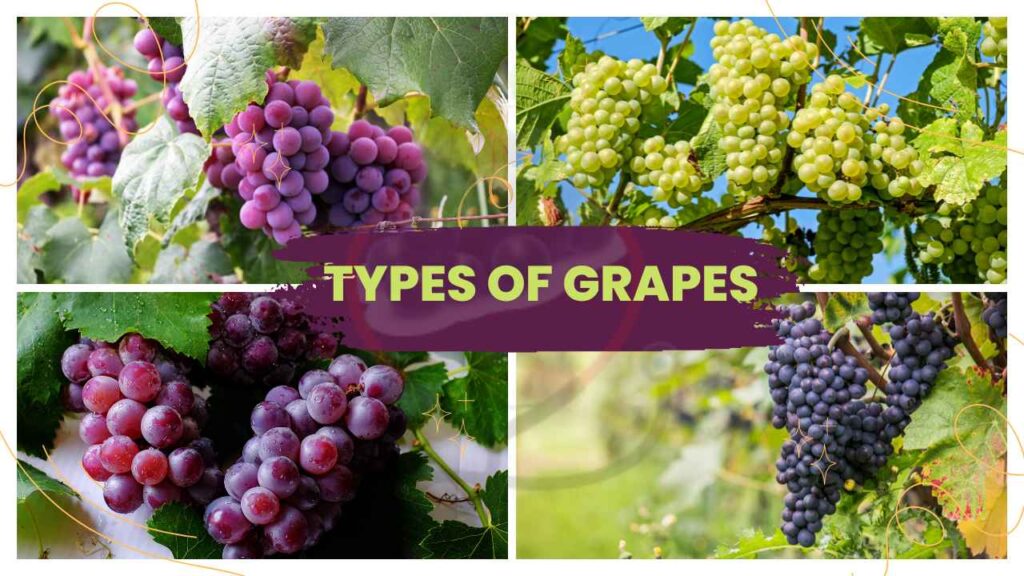
There are two main types of grapes: table grapes and wine grapes. Table grapes are the ones that we usually consume as a snack or in salads, while wine grapes are used in wine production. [7]
1: Table Grapes
Table grapes come in various colors, including green, red, and black. They are generally sweeter and juicier than wine grapes, making them perfect for snacking. [8]

2: Wine Grapes
Wine grapes are usually smaller than table grapes and have thicker skins. They are less sweet than table grapes and have a more tannic flavor that makes them ideal for wine production. [9]
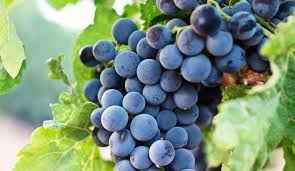
3: Juice Grapes
Juice grapes are a type of grape that is primarily used for making grape juice, rather than wine. [10] These grapes are typically sweeter and have a lower acidity than wine grapes, making them better suited for juice production.
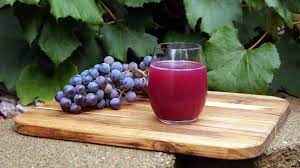
Some common varieties of juice grapes include Concord, Niagara, and Catawba. Juice grapes are also used for making jelly and other grape-based products.
4: Autumn Royal Grapes
Autumn Royal grapes are characterized by their deep purple-black skin and bright yellow-green flesh. With a rich, sweet taste and firm, crunchy texture, these seedless grapes are perfect for snacking. They also happen to be one of the largest varieties available. [11]
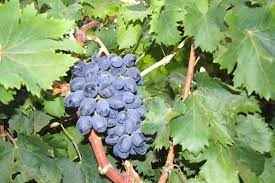
5: Pinot Noir grapes
Pinot Noir grapes are commonly used to produce Pinot Noir wine, which is a popular red wine worldwide, as per Wine Folly.
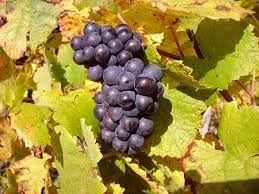
These grapes are believed to have originated in Burgundy, a region in central France, where they were cultivated by Cistercian monks during the middle Ages. Apart from red wine, these grapes are also used to produce white, rosé, and sparkling wines.
6: Moon Drops Grapes
Moon Drops are a unique, seedless, and delicious black grape with a crunchy texture and distinctive shape. They make a great snack, can be stuffed with fillings, and last longer in the fridge. Developed over 15 years, they are available from late July to late September.

7: Sultana grapes
Sultana grapes, also known as Thompson Seedless, are one of the oldest grape varieties. They are small, green-white, very sweet, and used to make white raisins. They are mainly grown in California, Australia, and Turkey and are harvested from July to September.
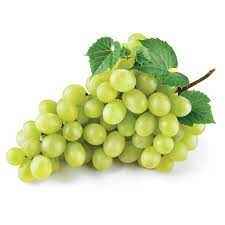
8: Canadice Grapes
A small, seedless red grape variety that is known for its sweet, juicy flavor. It is often used in fruit salads or as a garnish for cocktails. [15]
9: Muscat Grapes
Muscat grapes come in various colors from pale green to deep purple and are great for both wine and table consumption. Perlette grapes, which are small and green with a frosty white skin, are also suitable for home gardens due to their hardiness.
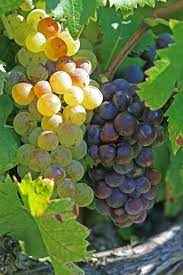
10: Concord Grapes
Concord grapes are a sweet, musky-flavored dark blue-black grape variety primarily grown in northeastern US and Canada. They are often used to make grape juice, jam, and red wine with a fruity and floral aroma. [16]

Concord grapes are harvested from late summer to early fall and are a good source of vitamins and antioxidants, containing resveratrol in their skins which has health benefits.
11: Cotton Candy Grapes
Cotton Candy grape is a unique green grape with the sweet flavors of cotton candy, combined with the health benefits of conventional grapes. David Cain of International Fruit Genetics is credited with developing this elongated and extra sweet table grape in 2010.

Although lab-generated, the Cotton Candy grape is not genetically modified, but rather a hybrid of two undisclosed varieties. You can find these delicious grapes at your local supermarket.[17]
12: Candy Snaps Grapes
The Candy Snaps grape is a seedless red grape variety developed by International Fruit Genetics (IFG) as part of their novelty grape line. This initiative aims to offer natural alternatives to artificial sweets.

Candy Snaps grapes are known for their long-lasting red-purple color, even after ripening, and their longer shelf life compared to other red grapes. They have a thin skin and firm flesh, offering a satisfying crunch. Although mostly sweet with low acidity, they also provide a unique fruity aftertaste that sets them apart from other grapes. [18]
13: Candy Hearts Grapes
The Candy Hearts grape is a new addition to the red grape family, having been developed in 2014 and released for commercial production in 2017 by International Fruit Genetics.
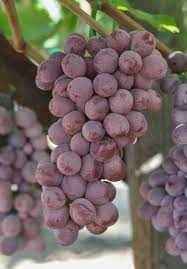
This grape boasts a perfect balance of sweetness and acidity, with a unique flavor profile that includes hints of vanilla, strawberry, or raspberry. [19]
14: Carnival Grapes
Carnival grapes are easily recognizable by their golden-green color and intensely sweet taste. Developed by Sunview Vineyards, a third-generation family farm in California, they are exclusively produced by the company, holding a proprietary patent.

These seedless grapes offer a burst of flavor reminiscent of classic carnival treats such as cotton candy and candy apples, but without any artificial flavors or sugars.[20]
15: Crimson Grapes
Crimson grapes are a popular seedless red grape with a sweet taste and crisp texture. They were developed in California by David Ramming and Ron Tarailo in 1989 and have a long shelf life.

They are commonly found in grocery stores and are known for their pleasing tartness and pale brick red color.[21]
Health Benefits of grapes
Grapes not only have a delicious taste but also provide several health benefits due to its impressive nutritional content. Below are benefits of mango, along with some tips on how to enjoy it. [22]
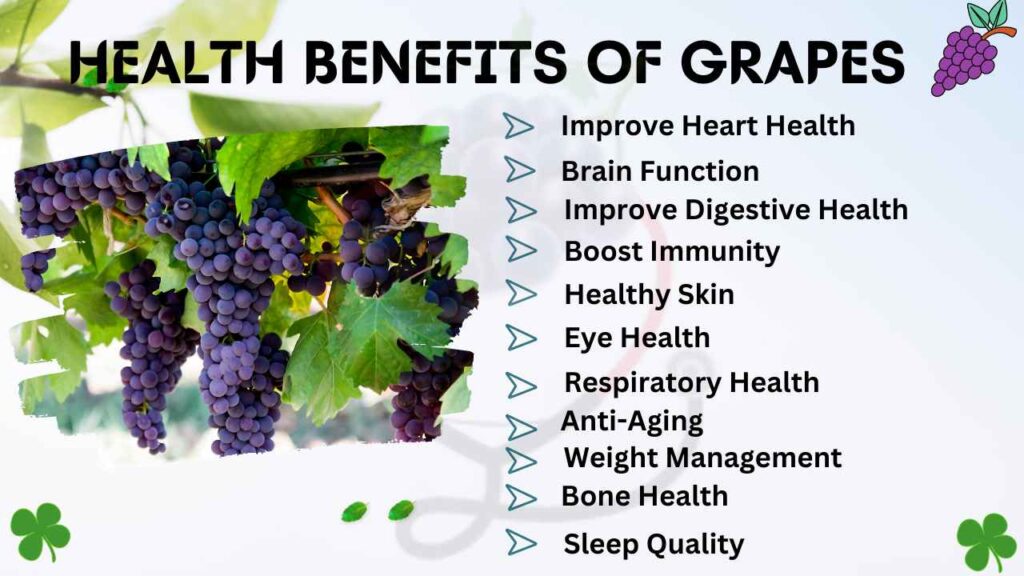
1: Improve Heart Health
Grapes contain compounds that can help improve heart health and prevent heart disease. Resveratrol, a compound found in grapes, has been shown to reduce inflammation and lower blood pressure, which are both risk factors for heart disease. [23]
Grapes also contain potassium, which can help lower blood pressure and improve heart function.
2: Boost Testosterone Levels
Testosterone is a hormone that is important for men’s health, including maintaining muscle mass, bone density, and sexual function. [24] Grapes contain compounds that can help boost testosterone levels.
Resveratrol has been shown to increase testosterone levels and improve sperm quality in men.
3: Enhance Brain Function
As men age, cognitive decline becomes a concern. Grapes contain compounds that can help enhance brain function and prevent cognitive decline. [25] Resveratrol has been shown to improve memory and learning in animal studies. Grapes also contain antioxidants that can help protect the brain from oxidative stress, which is linked to cognitive decline.
4: Improve Digestive Health
Digestive issues are common among men, and grapes can help improve digestive health. Grapes are high in fiber, which can help regulate bowel movements and prevent constipation.
Grapes also contain compounds that can help protect the gut lining and prevent inflammation, which can improve digestive health. [26]
5: Prevent Prostate Cancer
Prostate cancer is the second most common cancer among men worldwide. Red Grapes contain compounds that can help prevent prostate cancer.[27] Resveratrol has been shown to inhibit the growth of prostate cancer cells in animal studies.
Additionally, grapes contain quercetin, a flavonoid that has been linked to a reduced risk of prostate cancer.
6: Boost Immunity
Men are often more susceptible to infections and diseases than women. Grapes contain compounds that can help boost immunity and prevent infections. [28]
Grapes are high in vitamin C, which is important for immune function. Grapes also contain polyphenols, which have been shown to have antimicrobial properties.
7: Reduces high cholesterol
Grapes contain pectin, a type of fiber that helps to bind to cholesterol in the digestive system and prevent its absorption into the bloodstream. They also contain polyphenols, antioxidants that prevent the oxidation of LDL cholesterol and the formation of plaque in the arteries. [29] Consuming grapes as part of a balanced diet can help to lower cholesterol levels and support heart health.
8: Improve Sexual Function
Sexual dysfunction is a common concern among men, and grapes can help improve sexual function. Grapes contain compounds that can help improve blood flow, which is important for sexual function. [30]
9: Anti-Inflammatory Effects of Grapes
Inflammation is a natural response to injury or infection, but chronic inflammation can contribute to a wide range of health problems, including heart disease, diabetes, and cancer. Grapes contain anti-inflammatory compounds that can help reduce inflammation throughout the body.
10: Grapes for Healthy Skin
Grapes are packed with antioxidants, which can help protect the skin from damage caused by UV radiation and environmental toxins. They also contain vitamin C, which is essential for collagen production and can help keep the skin looking youthful and healthy. [31]
11: Grapes for Improved Eye Health
Grapes contain compounds called anthocyanins, which can help improve eye health. [32] These compounds can help protect the retina from damage and reduce the risk of age-related eye diseases, such as macular degeneration.
12: Benefits for Respiratory Health
Grapes can also help improve respiratory health. The antioxidants in grapes can help reduce inflammation in the lungs and improve lung function. They also contain a compound called quercetin, which has been shown to improve the symptoms of asthma. [33]
13: Anti-Aging Effects of Grapes
Grapes are a natural anti-aging food, thanks to their high levels of antioxidants. These compounds can help reduce the damage caused by free radicals and promote healthy aging.
The resveratrol in grapes has been shown to activate genes that promote longevity and slow the aging process.
14: Weight Management
Grapes are a great snack for anyone trying to manage their weight. They’re low in calories, high in fiber, and contain compounds that can help reduce inflammation and improve metabolic health.
Studies have shown that eating grapes can help promote weight loss and reduce the risk of obesity-related diseases. [34]
15: Bone Health
Grapes contain several nutrients that are essential for bone health, including calcium, magnesium, and vitamin K. These nutrients can help improve bone density and reduce the risk of fractures and osteoporosis. [35]
16: Sleep Quality
Grapes contain a compound called melatonin, which is essential for regulating the sleep-wake cycle. Eating grapes or drinking grape juice can help improve sleep quality and promote restful sleep. [36]
17: Benefits for Pregnancy and Fertility
Grapes are a great food for pregnant women and those trying to conceive. They contain folate, which is essential for fetal development, as well as antioxidants that can help protect against birth defects. [37]
18: Lowers blood pressure
Grapes have been shown to have blood pressure-lowering effects, making them a great addition to a heart-healthy diet.
This is because grapes are high in potassium, which is an important mineral that helps to regulate blood pressure. Potassium helps to counteract the effects of sodium, which can raise blood pressure if consumed in excess. [38]
19: May protect against bacteria and fungi
Grapes contain natural compounds that have antimicrobial properties, which mean they may help to protect against harmful bacteria and fungi.
One of the compounds found in grapes is called ellagic acid, which has been shown to have antimicrobial effects against several types of bacteria and fungi, including Staphylococcus aureus and Candida albicans. [39]
20: Protects against diabetes
Grapes contain polyphenols that help to improve insulin sensitivity and reduce inflammation, which are important for regulating blood sugar levels and protecting against diabetes and its complications.
Consuming grapes as part of a balanced diet may be beneficial for those with or at risk of diabetes. [40]
21: May improve memory, attention, and mood
Grapes contain polyphenols like resveratrol, which protect the brain and improve memory, mood, and attention.
Regular consumption boosts cognitive function, reduces anxiety and depression, and enhances driving in older adults. Polyphenols enhance brain blood flow and reduce inflammation for optimal brain health.[41]
22: Keeps You Hydrated
Grapes are an excellent source of water, making them a great way to stay hydrated. In fact, over 70% of a grape’s weight is water, making them a natural source of hydration. [42]
The high water content of grapes can help to promote satiety and reduce overall calorie intake, making them a smart choice for weight management.
Easy Grapes Recipes
Grapes are not only a sweet and delicious fruit, but they are also packed with nutrition, making them a great addition to any diet.
With their versatile flavor, grapes can be used in a variety of easy and healthy recipes.
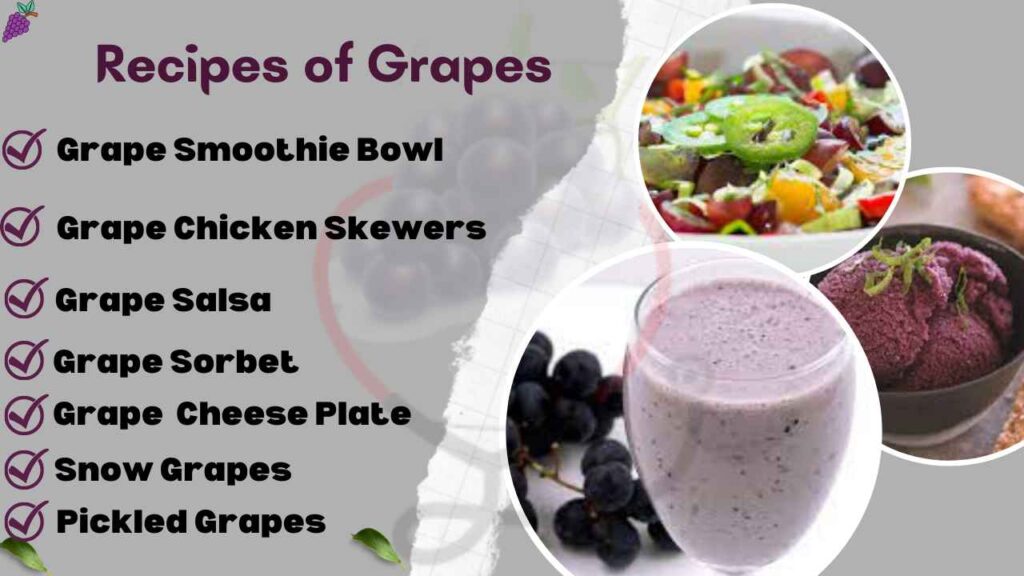
Grape Salad with Feta and Walnuts Recipe
Grape Smoothie Bowl
Grape and Chicken Skewers
Grape and Goat Cheese Crostini
Grape and Spinach Salad
Grape Salsa
Grape Sorbet
Grape and Almond Butter Toast
Grape and Cheese Plate
Triple Fruit Freeze Recipe
Spiced Grapes Recipe
Grape and Coconut Salad
Caramel Grapes Recipe
Snow Grapes
Pickled Grapes
Grapes are a versatile and delicious fruit that offer numerous health benefits. From reducing the risk of chronic diseases to promoting healthy digestion and boosting immunity, grapes are a great addition to any diet.
They come in a variety of types and can be incorporated into a range of recipes, including salads, smoothies, and even savory dishes like skewers and crostini.
FAQs
What are grapes?
Grapes are a type of fruit that grows in clusters on woody vines. They come in a variety of colors and flavors, and are often used to make wine, juice, and raisins.
What are the health benefits of grapes?
Grapes are a good source of vitamins C and K, as well as antioxidants that can help protect against heart disease, cancer, and other chronic illnesses. They may also help improve digestion and promote healthy skin.
How should I store grapes?
Grapes should be stored in the refrigerator in a plastic bag or container with holes for ventilation. They can last for up to a week in the fridge, but it’s best to eat them as soon as possible after purchase for maximum freshness.
How do I choose ripe grapes?
Ripe grapes should be plump, firm, and free of bruises or wrinkles. They should also have a uniform color and a slight powdery coating called “bloom.” Avoid grapes that are too soft or have brown spots.
What are some ways to use grapes in cooking?
Grapes can be eaten raw as a snack, or used in salads, sandwiches, and desserts. They can also be roasted or grilled for a caramelized flavor, or used to make jams and jellies.
Can grapes be harmful to dogs or other pets?
Yes, grapes and raisins can be toxic to dogs and other pets, and can cause kidney failure. It’s best to keep grapes and raisins out of reach of pets, and to seek veterinary care immediately if your pet has ingested them.
How are grapes used to make wine?
Grapes are crushed to release their juice, which is then fermented with yeast to turn the sugar in the juice into alcohol. The wine is then aged in barrels to develop its flavor and aroma.
Are grapes grown all over the world?
Yes, grapes are grown in many different countries around the world, including the United States, France, Italy, Spain, Chile, and Australia. Different regions are known for producing different varieties of grapes and wines.
What are some creative ways to use grapes in recipes?
Grapes are a versatile ingredient that can be used in a variety of dishes. Some creative ideas include adding them to salads, using them in smoothies, roasting them for a unique side dish, or even pickling them for a tangy snack.
Are grapes safe for dogs to eat?
While grapes are a healthy snack for humans, they can be toxic to dogs and should be avoided. Grapes can cause kidney failure in dogs, so it’s best to stick to dog-safe treats and snacks for your furry friends.

